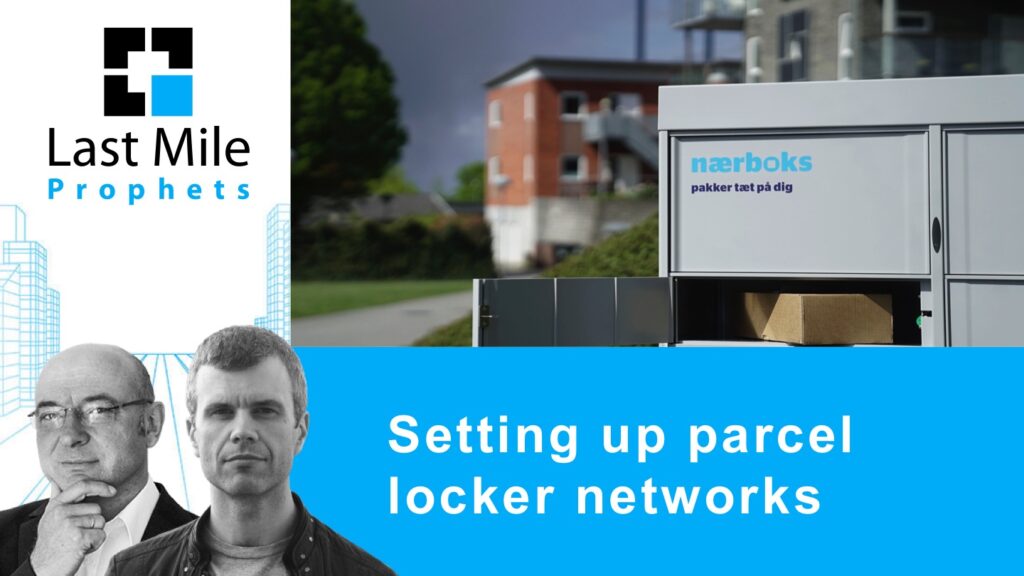An explosion of OOH points
The out-of-home (OOH) delivery market is growing at a tremendous pace. According to Last Mile Experts’ research on the European market in 2021, the number of OOH points increased by some 70% (average result for EU and UK). Parcel machine networks are growing at a similar level, and in more and more countries they are becoming the preferred method of B2C parcel delivery. However, there are countries where the increase in parcel lockers is much higher, for example ‘lockerland’ (aka Poland), where the number of machines increased by over 190%, or Sweden with a 170% increase year-on-year.
Growing issues placing lockers
Although the automated parcel machines (APMs) concept is not new, as they gain in popularity, operators face many problems with network expansion. One such problem is finding good locations that ensure easy and proximate access for consumers. Another problem is the general lack of awareness of landlords regarding legal or technical requirements for placing an APM in a publicly accessible place. In many cases, the installation of the machine requires the preparation of an appropriate foundation, as well as the construction of pavement and taking care of the appropriate electrical infrastructure.
Servicing and maintenance challenges
Growing competition means that the expectations of both locker manufacturers and network operators are also growing. One of the main requirements is the so-called ‘response time’ in the event of a device failure – of course, the shorter the better! There are two main types of service response: remote, where a service technician connects to the device via a network and makes repairs – this happens mainly in the case of software problems; or a field visit, which is generally needed when there is a mechanical failure, for example a lock, keyboard or monitor issue.
Locker downtime has an impact on the level of consumer satisfaction (and network capacity), so it is important that APM network operators choose service providers who can ‘walk the talk’. All too often price is chosen over good SLA (service level agreement) terms. One of the biggest problems in the industry recently has been the lack of spare parts and components, which is the result of global problems with the production of semiconductors and other electronic components. It can be expected that the war in Ukraine will only aggravate the situation.
Tools of the trade: what is needed to set up an APM?
Standard tools for a service team will depend on the type of device and can extend from basic builders and electrical equipment to an appropriate truck and a forklift. Of course, the key to success is having qualified and properly trained technicians who are able to start the software and carry out the tests required by the device manufacturer immediately after installing the machine.
What typical service routines are needed?
Each manufacturer has its own guidelines as to when and how to periodically service devices, but there are several steps that are common to all devices. We are talking here about verification of network connections (depending on the manufacturer, it can be GSM or radio communication), wi-fi or Bluetooth signal quality, lubrication of locks, setting the door or cleaning the device.
What is it likely to cost (very high level)
The costs of installing machines are of course very different and depend on the type of machine, its size (number of modules), technologies used that support communication with the operator and the consumer (recipient/sender of the shipment), the place where the machine is to stand and the distance from the company’s headquarters, and they range from several hundred to even several thousand euro per location.
What are the consequences of not choosing the right service partner?
Skimping on this service can be a very costly economy. Low-quality service can translate into dissatisfaction and expensive and timely service failures. We know that, especially for e-commerce, the customer experience is a key element of success, and an efficient and accessible APM point supports a positive experience. In extreme cases, repeated network service failures can lead to a change in consumer’s purchasing decisions.
Conclusions
There is no doubt that in the coming years we will observe a continued trend of expansion in OOH networks and especially in parcel lockers. Many countries are already advanced in network development, for example Finland, where more than 90% of B2C deliveries are made to OOH points. But there are also many markets, such as the UK or Italy, where we see great potential and the number of devices is still negligible. Bearing in mind that such projects are expensive not only because of the price of the parcel machines themselves (ranging from several to tens of thousands of euros per unit), it is necessary to think carefully about the concept and have a solid strategy for building a network. Many investors have financial and technical resources to enter the race for primacy in the OOH market, but very often they do not have practical knowledge and experience related to infrastructure and operations in the last-mile area.
This space is still heavily underdeveloped but we can see a growing need for large service partners able to install and service APMs (as well as PUDO hardware) nationwide and even internationally.
Follow the Last Mile Experts on LinkedIn
Mirek Gral is vice president at Last Mile Experts. He was formerly COO of UPS Poland, and has over 27 years’ experience in the courier industry.

Marek Różycki is managing partner at Last Mile Experts, specializing in CEP and e-commerce last-mile advisory.


